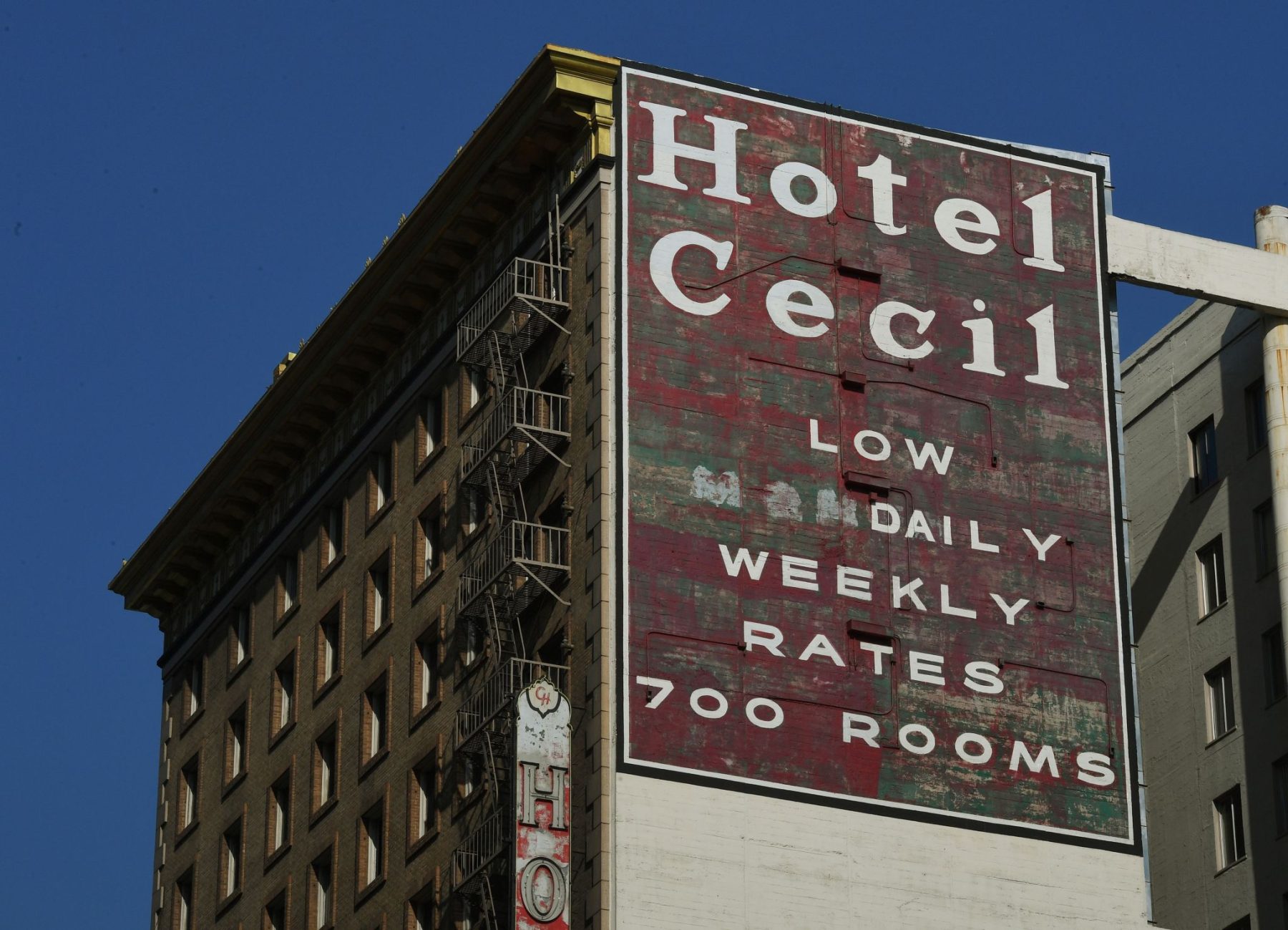The Cecil Hotel is a mysterious building with a history of serial killers, suicides and other deaths. Its mysteries have fascinated true crime historians and fans throughout the years. Some fans theorize that the Cecil Hotel is haunted or cursed by a dark entity; a few have even reported ghost sightings within the building.
However, the most disturbing aspect of the Cecil Hotel is its location. The hotel is in Skid Row, a Los Angeles neighborhood designed to keep the impoverished population separated from the city’s wealthy community. Skid Row is known for its abundance of crime, as well as its large homeless population.
When the hotel was built in 1924, it was first used for business trips. Today, it is a hostel and low-budget housing complex. Over the years, the hotel became famous for the frequent suicides and murders that occurred within its walls. The first suicide occurred during the Great Depression in 1931, when a New York resident was found dead in his hotel room. When the Los Angeles police investigated the case, they determined his death to be a suicide after discovering potentially poisonous capsules in his vest pocket.
Moreover, some murders were left unsolved due to a lack of evidence or witnesses. For instance, a retired telephone operator nicknamed “Pigeon Goldie” Osgood stayed at the Cecil Hotel, where she earned her nickname by feeding pigeons. However, on Jun. 4, 1984, she was found stabbed and sexually assaulted in her room: the culprit was never found.
Another mystery is the case of Elisa Lam, who checked into the Cecil Hotel on Jan. 26, 2013, and was found dead in one of the hotel’s water tanks on Feb. 19, 2013. Police believed that Lam had a bipolar episode and accidentally drowned after climbing into the water tank. Some theorists believe she was murdered before being dumped into the tank, but unfortunately, there was not sufficient evidence to prove either of these claims.
Perhaps more disturbingly, Richard Ramirez, commonly known as “The Nightstalker,” stayed at the Cecil Hotel in the 1980s while committing a killing spree across Los Angeles.
However, the dark history of Skid Row is even more horrifying than that of the Cecil Hotel. Alongside skyrocketing crime rates, Skid Row contains the city’s homeless citizens, some of whom suffer from mental health issues. In the 1970s, city planners and politicians wanted to contain the homeless population in one large neighborhood — separate from the wealthy areas of the city. At first, they attempted to bulldoze dilapidated buildings to make way for business locations. However, they changed the plan after realizing that constructing new offices would not reduce homelessness. The city leaders devised a new plan: building a “containment zone,” for the impoverished population. This zone later became known as Skid Row.
According to the YouTube video “Skid Row Explained,” the city’s leaders built park benches and public bathrooms to “serve as a magnet to hold undesirable population elements in Skid Row.” The city also installed bright streetlights and locks in the surrounding neighborhood trash cans so that residents would not leave to scavenge for food. Police officers were even tasked with patrolling the neighborhood to stop residents from leaving.
While the impoverished population was contained, the already-vulnerable population grew, and the mental health institutions of Los Angeles could not afford to help. However, rather than finding other ways to help them, these institutions often abandoned patients with serious mental health problems in Skid Row, knowing that they would likely be trapped there. The city of Los Angeles knew they had a vulnerable population that needed help, but rather than fund vital social welfare programs Los Angeles authorities simply hoped the containment zone would conceal the issue.
The Cecil Hotel’s reputation has been a controversial topic for years, as some people focus more on the crimes than the victims. However, it is important to learn more about these victims and remember their hardships. Los Angeles let down the people who needed help in order to maintain its reputation as the home of the rich and famous.
The city could have spent its funds on programs to aid the underprivileged population, but instead catered to its local economy and the upper class. The mental health institutions in Los Angeles should have been investigated and sued for negligence, as they prioritized profit over the effective treatment of their patients. The residents of Skid Row should not be held like prisoners to be forgotten. They deserve the respect and recognition of Los Angeles because it’s their home too.
















